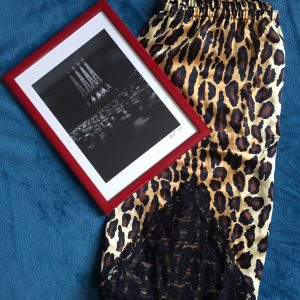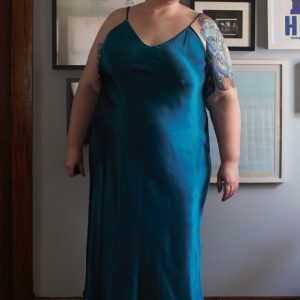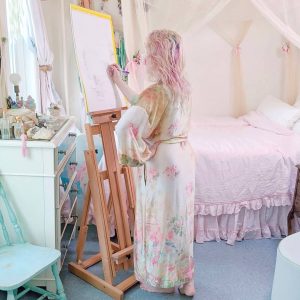How to Tell The Difference Between Real Silk and Polyester Satin
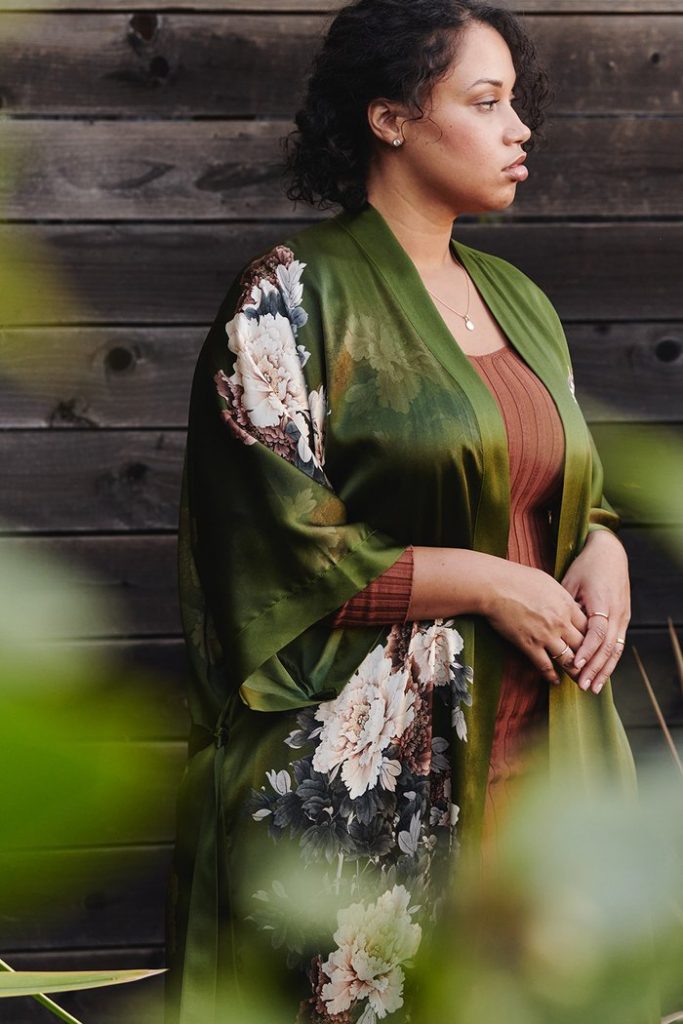
Kim + Ono Plus Size Silk Keina Robe, $198. While most of Kim + Ono's robes are synthetics, they do have a higher priced silk line, including this item.
There’s nothing better than grabbing a freshly-delivered package, opening up the box, and pulling out a brand new silk lingerie set.
On the other hand, there’s nothing worse than opening up that box and realizing you just spent $100 on polyester.
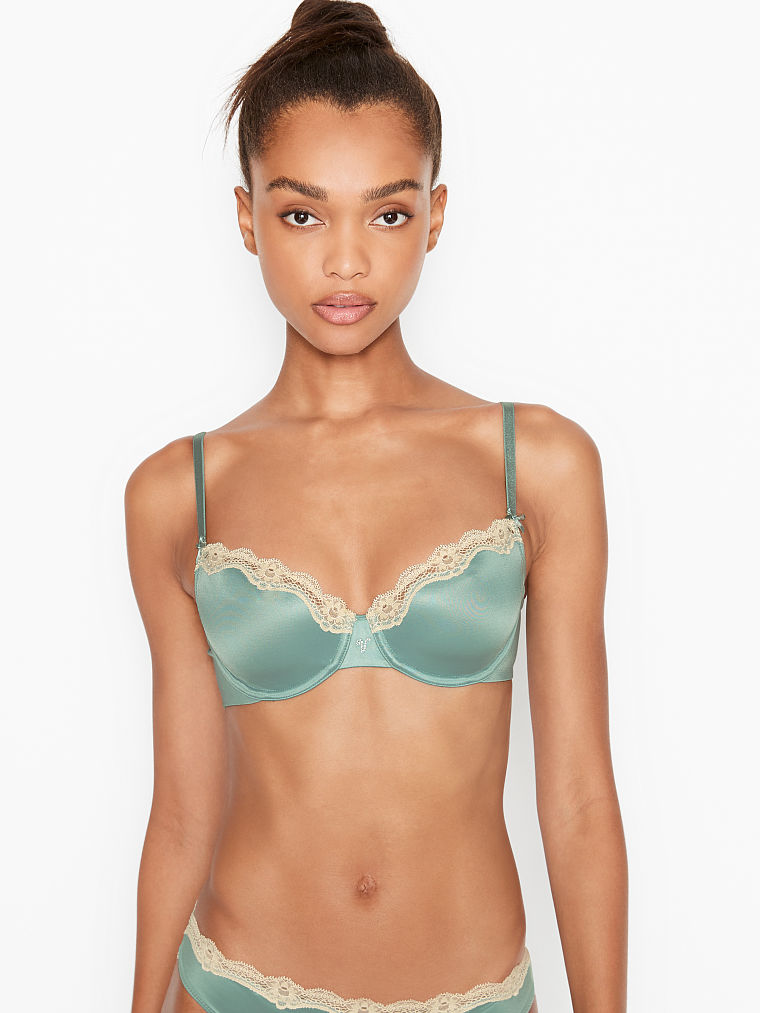
Victoria's Secret Dream Angels Satin & Lace Balconette Bra, $49.50. This bra is satin, but not silk.
And while there’s nothing wrong with synthetic satin, it’s important to know what you’re spending your money on. In the last year, I've seen an influx of drop shippers and online lingerie sellers claiming to sell cheap “silk lingerie” that is just…clearly not silk.
These companies could be blatantly lying, but it’s also possible they just don’t know what actual silk is. After all, you can start a lingerie drop shipping company with absolutely no fabric knowledge at all! (Or lingerie knowledge, for that matter.) In this case, I like to assume good faith and shop elsewhere.
But how do you know when to shop elsewhere? First, you have to know what silk is. So let’s start with the basics.
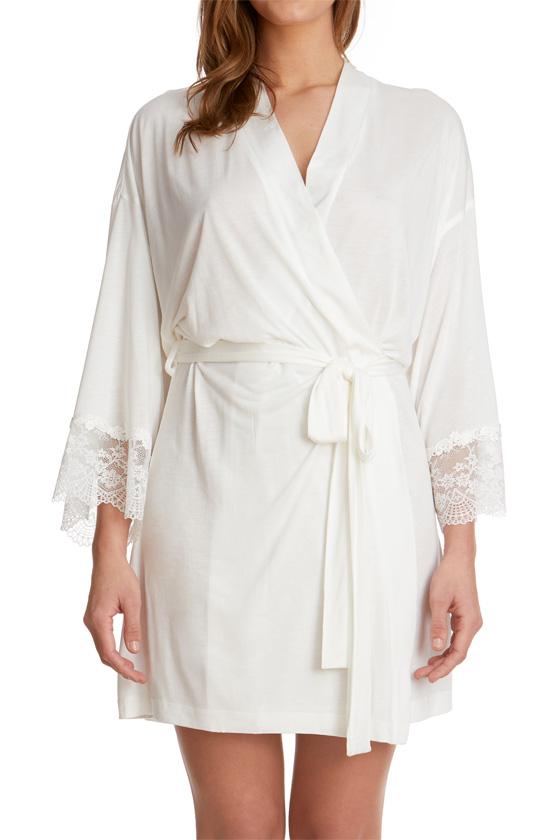
Monique Lhuillier X Hanky Panky Bouquet Robe in Silk White Jersey, $160. Note that there is no silk in this 100% modal robe. It's the color that is called "Silk White."
What is Real Silk?
We’ve discussed this briefly on the blog before, but it's worth repeating in case you missed it. Silk is the name of the fiber that comes from silkworms. Fiber is turned into fabric, which can be described by its fiber (like silk, cotton, or polyester). But fabric can also be described by its weave, like satin.
What does that mean for you? It means that “satin” is not synonymous with silk. One is a fiber and one is a weave, or fabric. “Silky” and “silken” are not silk. Sometimes, “silk” isn’t even silk.
Yes, it’s totally confusing. So how do we tell the difference from real silk and polyester?
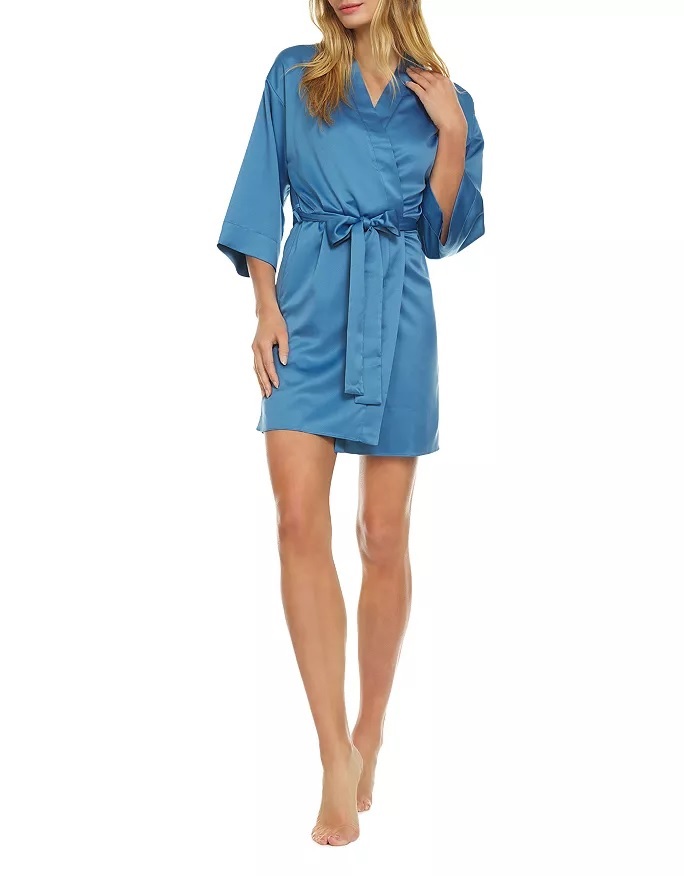
Flora Nikrooz Victoria Charmeuse Robe, $48 via Bloomingdale's. This robe's fabric is charmeuse, but the fiber is polyester.
Examine the Verbiage
If you’re shopping online, look at the item description carefully. Most major lingerie lines will list the fiber content, which will tell you the exact composition of the fabric. I like to do a “ctrl+f” search for “%” which usually takes me straight to the fiber content.
If you can’t find that fiber percentage, here are some names for real silk fabric to look out for:
- Mulberry silk
- Peace silk (this means the silkworms have not been killed in the making of the silk)
And here are some names for fabrics that are not made of real silk:
- Art silk
- Artificial silk
- Faux silk
- Bamboo silk
- Ice silk
- Polyester satin
Finally, here are some names for fabrics that may or may not contain silk, depending on their fiber content:
- Satin
- Charmeuse
- Crepe
- Sateen
- Stretch silk
Of course, this isn’t foolproof. I recently saw an Amazon listing for a pair of knickers made of “100% silk stretch fabric.” Silk fabric is only stretchy when it’s blended with a fiber like elastic, so that description was clearly a lie.
Once you get the garment in front of you, how can you be sure you purchased something made of real silk?
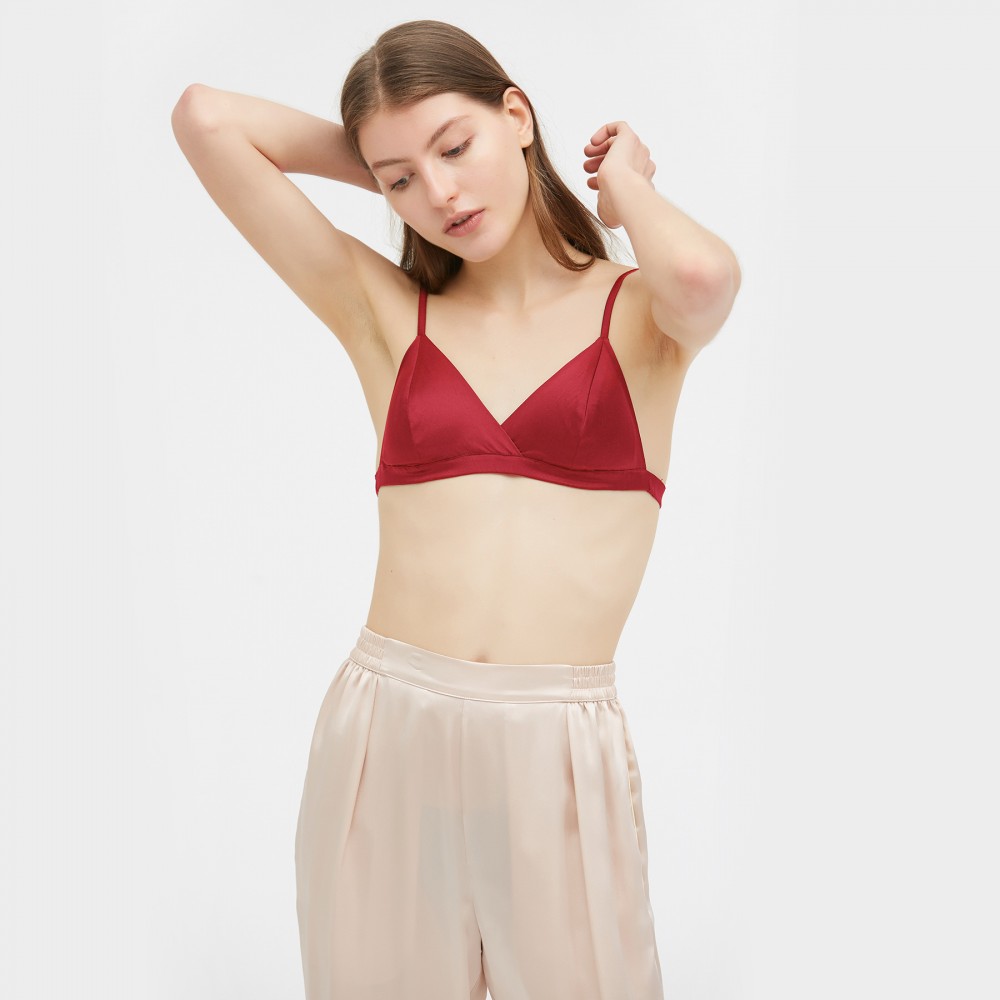
Lilysilk Two Pack Silk Bralette, $100 for two
Look at the Label
In most countries, manufacturers are required by law to label their apparel with the fiber content. If the label lists a percentage of silk, it’s made with that percentage of silk. Full stop. Fraud of this nature exists, but it’s quite rare. (If you want to nerd out about this stuff, or just want to be reassured on how protected Stateside consumers are when it comes to fabric, check out the FTC’s website!).
If you’ve purchased an item listed as silk, but the label says it’s made of something else, this is false advertising. You can likely file a claim with your bank or credit card in this case.
But how much silk is required to call something “a silk garment?” There’s no standard. Most silk lingerie will have some percentage of elastic for ease of movement, and that’s OK. When I shop for silk, I look out for fabric made from 75 percent silk or more. Anything less than that, I’d consider a blend.
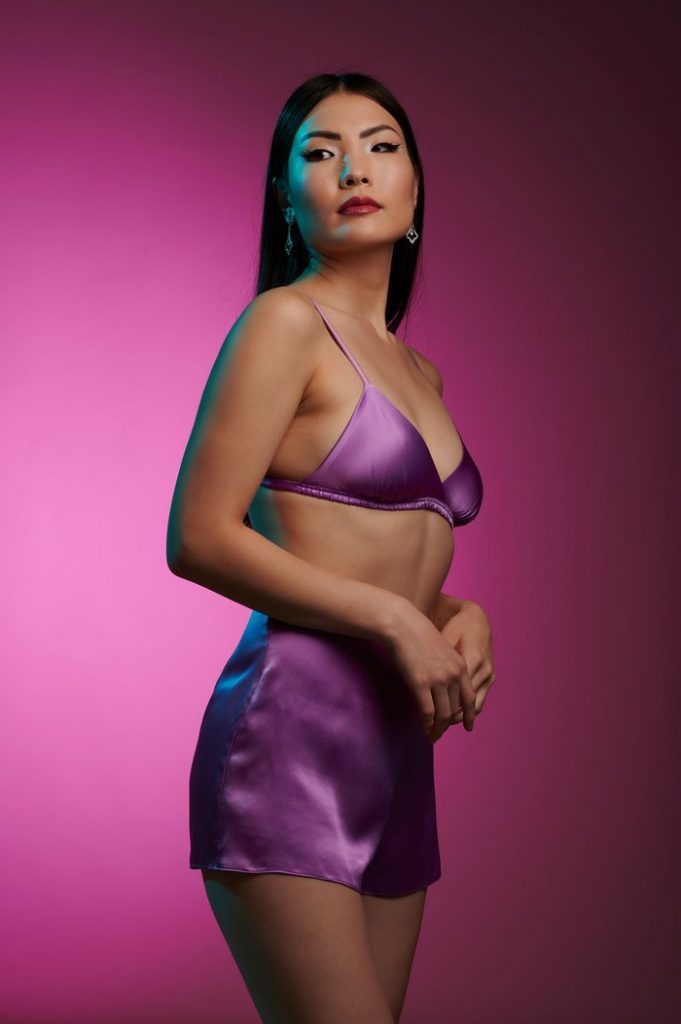
Angela Friedman Silk Louisa Bralette,$109 ; Silk Tap Pants, $128
Look at the Price
Silk is expensive to make, so it’s expensive to buy. Creating silk fabric is labor-intensive and takes time. Much more time than a comparable synthetic, due to the lifecycle of the worms used to create it.
There’s no getting around this fact. So when you’re shopping for silk lingerie, if the price seems too good to be true, it probably is.
A good rule of thumb: If a piece of lingerie costs less than $50 or so at full price, it’s probably not real silk.
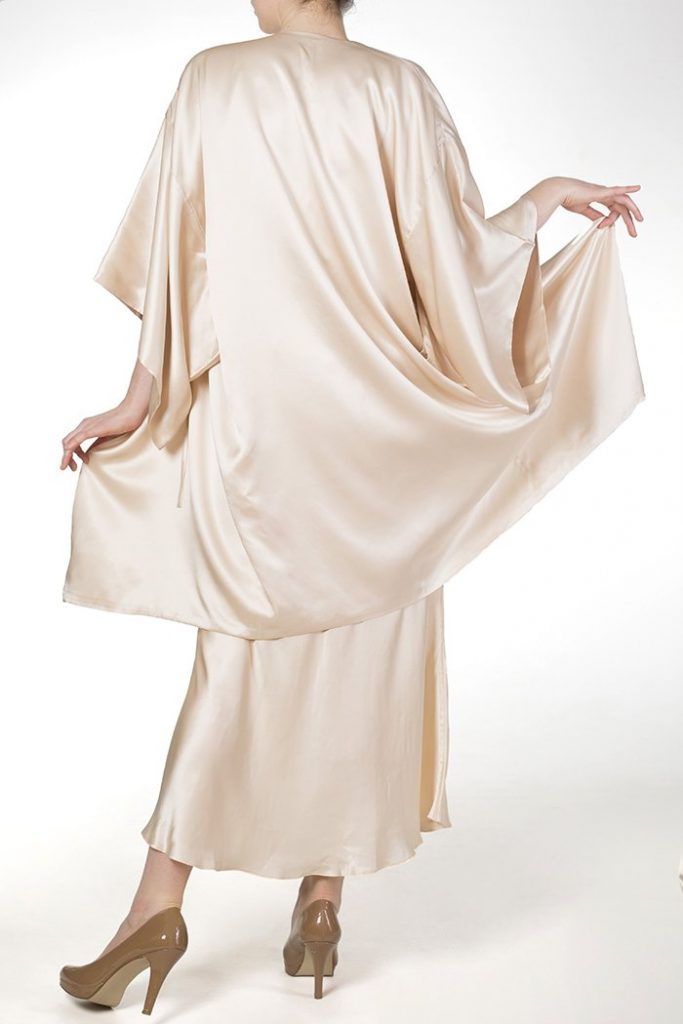
Harlow & Fox Cassiopeia Silk Robe, $550; Silk Gown, $480
When In Doubt…
After you’ve handled enough real silk garments, you’ll get a feel for the fabric. Literally.
Experienced lingerie addicts can tell if a fabric is silk, simply by the way the light hits it, or the way it feels in your hand. Colored synthetic fabrics flash more of a shiny “white” under bright lights, instead of a shimmery tonal color. And silk has a toothy, rich texture between your fingers, rather than a slippery, squeaky texture.
However, that can be difficult to discern when you’re first starting out. (Even high-end synthetics trip me up sometimes, too!) So until you’re at that point, this is how you can tell. If there isn’t a percentage of silk listed on the garment or its product page, it’s not silk.





